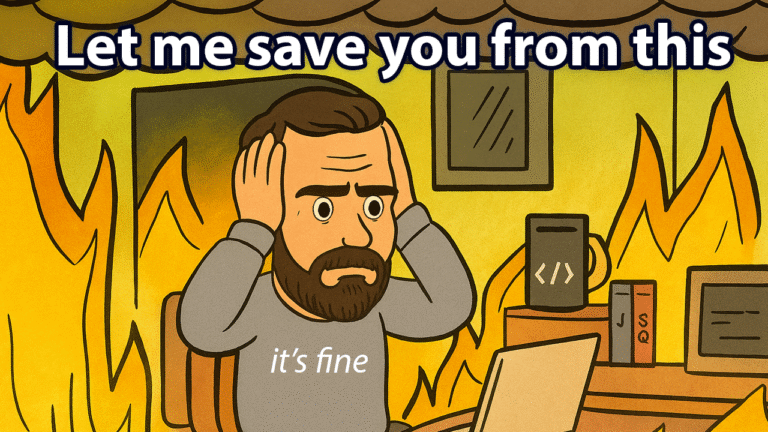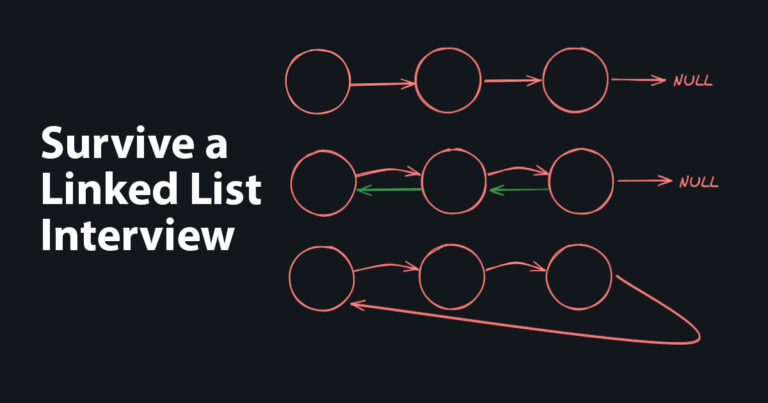💡 Somewhere out there there is a recruiter looking for your skill set. How will they find you?
When I first signed up for LinkedIn in high school (for extra credit from my science teacher, of all things), I had no idea if it would ever help me in the future. For years, my profile sat mostly untouched. When I decided to pursue software engineering as a full time career via a traditional college route, I was not sure what will and will not help me reach my goal.
While in college, I started slowly watering the seed my LinkedIn profile. I figured, “Why not keep it updated? Who know if it will come in handy later on.” Over the years I’ve added previous colleagues, professors, and students I’ve met along the way.
Prefer a video instead of reading?
Interesting facts about LinkedIn
LinkedIn launched on May 05, 2003 and overtime became one of the most popular social media platforms in the world. Unlike other platforms, it wasn’t about cat memes (did this change?). Instead, LinkedIn connected professionals and quickly became the go-to place for job seekers, recruiters, and industry experts. With over 900 million users worldwide1, it is more than just a job board. In my opining, LinkedIn is the most powerful networking tool for professionals in the United States today.
Getting a job in tech is hard
Let’s face it, getting your first job in tech is already hard enough. It was difficult and stressful for me and all of my peers in school. With the tech market tightening, getting your second (or a third) job is not going to be easy either. Taking advantage of every tool you can get your hands on is a good idea. Here are a 5 reasons you should have LinkedIn as a software engineer:
1. Building trust & social proof
Whether you want to work at a large corporation, join a startup, or freelance, LinkedIn helps you build social proof. Your profile shows more than just a resume, it’s a public portfolio of endorsements and recommendations from your network. Colleagues can vouch for your skills and write you a public recommendation, which helps recruiters see that your abilities are backed by others.
While these endorsements and recommendations aren’t always job-specific, they demonstrate that people trust your expertise. This kind of validation is hard to convey on a traditional resume and LinkedIn makes it easier.
2. Talent discovery (discoverability)
Back to my original question: Somewhere out there there is a recruiter looking for your skill set. How will they find you?
In today’s competitive job market, getting noticed by recruiters is tough without LinkedIn. A job search without social media is like cold outreach. Sending resumes into the void is not fun. A well-optimized LinkedIn profile will enable recruiters to find you through keyword searches, giving you opportunities you didn’t even know existed. I am not exaggerating, this happens all the time.
Think of it this way: If you don’t have LinkedIn, most recruiters don’t know you exist. Having a profile makes you much more visible to potential employers.
3. Nurturing Existing Connections
Professional relationships need occasional nurturing. It’s not a “set-it-and-forget-it” kind of thing. Staying in touch with your professional network can be messy without LinkedIn. You’d need to manage a mix of emails, phone numbers, and social media accounts, which can be a hassle. And let’s be honest, it’s nice to put a face to a name when reconnecting with old colleagues.
LinkedIn keeps everything in one place. Not only can you maintain your network, but you can also keep up with what your connections are doing. Whether they’ve switched jobs or launched a business, it can open up new opportunities for you. Who knows if your old coworkers will become your future teammates again.
4. Finding new connections
LinkedIn also makes it easier to find new connections. You can search for alumni from your school working at companies you’re interested in or discover people who’ve worked at the same places as you. These commonalities make reaching out less intimidating and can often lead to valuable referrals (it has helped me get numerous referrals in the past).
5. Referrals – the most valuable part
This one is probably one of best parts on LinkedIn. If you’re applying to a company where you don’t already know someone, a warm introduction through a mutual connection on LinkedIn can make all the difference. Even without a mutual connection, LinkedIn is the only place I know of for finding referrals via cold outreach. Without the trust & social proof provided by LinkedIn, cold outreach to people you don’t know would be nearly impossible
Personally, I wouldn’t feel comfortable referring a stranger without first seeing their LinkedIn profile. It gives me a quick way to assess their experience, recommendations, and shared connections—without having to request a resume, references, or GitHub links upfront. LinkedIn streamlines the prescreening process and builds trust, all in one place.
Yes, I realize that LinkedIn is not the best way to vet someone. Please recommend a better way and I will happily give it a try 🙂.
Can other platforms do that for you?
I’ve experimented with other platforms like Indeed and Glassdoor, but for software engineering, they fell short. While I’ve heard Indeed works well in other fields, it didn’t yield a single callback or useful connection for me. In contrast, LinkedIn has consistently been a game-changer in my career.
Growing on LinkedIn is relatively easy
Compared to other social media platforms, growing your network on LinkedIn is surprisingly easy. Once you reach 500 connections, your profile will display “500+,” so there’s no pressure to amass thousands of followers to appear established. The focus isn’t on vanity metrics, it’s on meaningful connections. Unlike platforms that reward popularity, LinkedIn rewards professional engagement. A few thoughtful interactions (like commenting on posts, sharing relevant content, or sending personalized connection requests) can quickly expand your network.
The best part? You don’t need a massive following to see results; even a small, engaged network can open doors to new opportunities. LinkedIn isn’t a needy platform. I don’t spend a lot of time on it, nor do I post consistently. Every now and then, I’ll update my profile or send a few connection requests. That’s it. It takes very little effort over time, yet it still delivers results. Even small, occasional interactions can help you stay visible and open the door to new opportunities.
“LinkedIn is cringe”
I hear you. LinkedIn in 2024 is starting to feel a bit like Facebook. The endless motivational posts, humblebrags, and unsolicited advice can be… a lot. My advice is to not engage with it.
Pro tip: your connections can see the posts you react to. Keep that in mind.
Focus on nurturing your profile. Keep it updated, reach out to your connections through direct messages, and use the platform strategically to stay in touch. Avoid engaging with controversial content, it’s not worth it. You’re on LinkedIn to grow professionally, not to argue in the comments section. Treat it as a tool to build your career.
I recommend reading this post (will open in a new tab) if you care to learn more about the “LinkedIn cringe” 😄.
TL;DR
LinkedIn has been invaluable for me when it comes to vetting people before giving referrals and staying connected with my professional network. I’ve received multiple referrals through it, all without getting sucked into the endless content feed: I just focus on maintaining my profile. It keeps me visible to recruiters and ready for new opportunities, all with minimal time investment.
For these reasons, I highly recommend that every software engineer have a LinkedIn profile. It’s a low-effort, high-reward tool that can quietly work in your favor.
What I didn’t cover (because this posts is starting to get too long): if you’re wondering whether “quick applying” applying to jobs on LinkedIn is worth it… stay tuned. I’ll be diving into that soon!
Sources and inspiration
- Bondar, Oleksii (Dec 22, 2023) Important LinkedIn Statistics Data & Trends. https://www.linkedin.com/pulse/important-linkedin-statistics-data-trends-oleksii-bondar-pqlie ↩︎
- Nan, Palmero (Feb 13, 2012) LinkedIn-branded chocolates. https://en.wikipedia.org/wiki/LinkedIn#/media/File:Linkedin_Chocolates.jpg


